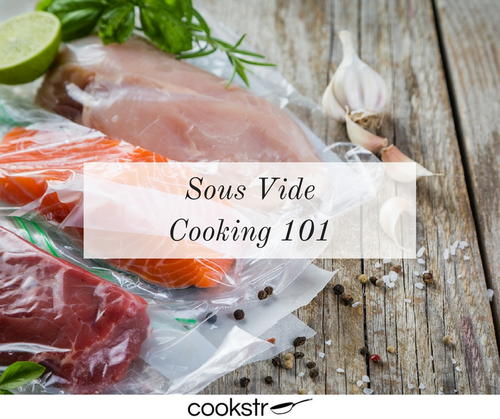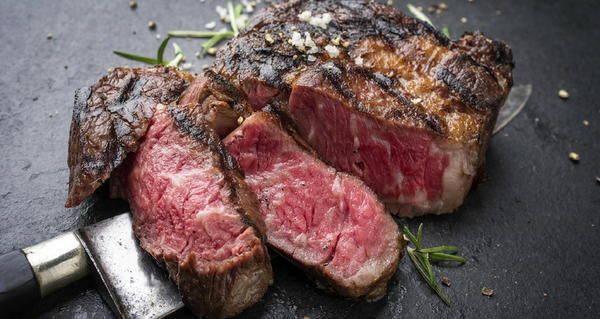What Is Sous Vide Cooking?

Although it has gained a reputation for being a trendy cooking method for hipsters, sous vide is much more than just a fancy way of preparing food. If you're looking for a way to make dinner so much easier, there's no better method than sous vide.
While there are some extra costs that come with purchasing the equiptment, you'll probably find that, after a few uses, cooking sous vide is more than worth the costs. It's practically impossible to overcook anything when cooking sous vide, and there isn't much that you can't make.
What Is Sous Vide Cooking?
Sous vide cooking (pronounced sue-veed) is a method of cooking food in vacuum-sealed packages that are then submerged in water or steam and heated to the proper temperature. Because the food is cooked by changing the temperature instead of simply adding heat, it's virutally impossible to overcook food this way.
Sous vide is a French cooking term that means "under vacuum" because the food is placed in vacuum-sealed plastic packages before being submerged. (Don't worry; it's totally safe to cook with plastic in this way.) This allows for even cooking, since you don't have to worry about hot spots, like you would with a grill or a stovetop.
Can You Overcook With Sous Vide?
The short answer is no. Because sous vide cooks your food slowly by bringing it to the proper temperature, it will never get hotter than the temperature of the water bath.
When cooking steaks in a pan, for example, the heat is applied directly to the meat from the pan itself. The heat enters the surface of the steak, but by the time it has reached the middle, the outside has cooked even more, and some of the heat has disspated. This is why cooking a steak is so difficult. The image below shows how grilled steaks cook more quickly on the outside than on the inside.
Sous vide, on the other hand, cooks the meat slowly. Because the heat reaches the meat evenly instead of from a singular surface, the meat is cooked thoroughly. Once the meat reaches the designated temperature, it won't get any hotter!

Is There a Down Side to Cooking Sous Vide?
While the cooking process itself is great for chefs who obsess over perfection, and even though it's a technique that has been used in restaurants for ages, there are some aspects of sous vide cooking that some might not like.
Sous vide does require a little bit of planning. You have to know how long your food will take to cook (which can take a while), and certain foods have a recommended ice bath after cooking as well.
Other down side to sous vide cooking is the time required to prepare foods. Depending on what you're cooking and how you like it cooked, it can take hours to cook completely. This is especially true with meats.
Lastly, even though your food might be cooked completely, that doesn't necessarily mean that you're done cooking it. With steaks, for example, you will probably want to sear the steaks afterwards. Sous vide does not account for the Maillard reaction, which is the chemical changes that occur when foods are "browned." This chemical change is the reason that toast tastes different than bread and roasted vegetables taste different than steamed. Your steak will still be safe to eat, as it will be cooked all the way through, but it won't necessarily look as pretty, and the taste might be a little different.
Getting Started and Sous Vide Equipment
The equipment needed for sous vide cooking can get a little pricy. But trust us -- it's worth it. There are some things to consider, though.
Here are some things you should consider when buying sous vide equipment:
- The volume of the pot - Depending on how much you will be cooking, you may want a larger pot to cook the volume of food you need.
- If the circulator you're looking for comes with a pot - Some immersion circulators come with a pot, but many do not. You can simply use a metal pot of your own, but keep in mind that you will be cooking with very high temperatures.
- Temperature power and stability - Temperature power refers to the speed at which the immersion circulator will bring the water to the desired temperature. The temperature stability, on the other hand, referrs to the circulator's ability to keep the water within a certain range -- usually within a fraction of a degree.
- Safety - With sous vide cooking, you are dealing with very high temperatures, which will cause water to evaporate and the water level to lower. Some brands of sous vide immersion circulators have alarms that will notify you when the water is too low, but some do not, requiring you to check the water level yourself. Other safety concerns include the heat from the pot itself and guards for the immersion ciruclators that prevent the plastic containers from bumping against the heating coils.
Have you tried sous vide cooking? What was your experience?
Let us know in the comments!
